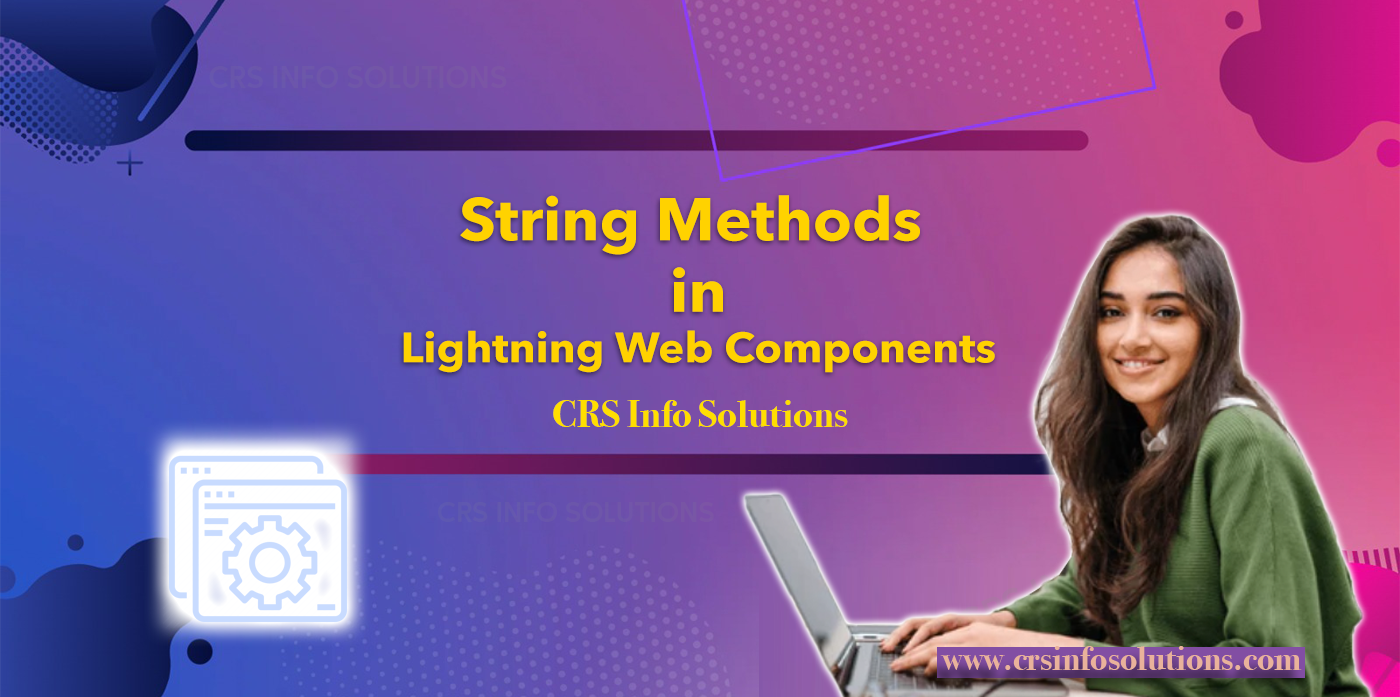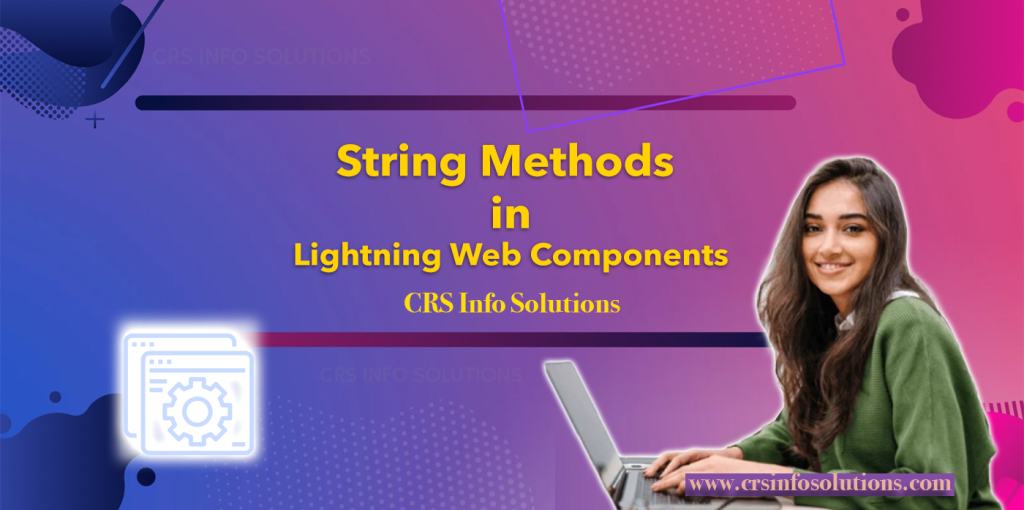
String Methods in Lightning Web Components

Table of Contents
- Understanding String Methods
- Example Code Snippets
- toUpperCase() and toLowerCase()
- includes()
- slice()
- split()
- replace()
- Best Practices for Using String Methods
- Use Chainable String Methods
- Prefer Template Literals for String Concatenation
- Use Regular Expressions
- Check for Empty Strings
- Common Mistakes with String Methods
- Forgetting that String Methods are Case Sensitive
- Return an Array of Specific Length
- Modifying Strings Directly
- Not Handling Edge Cases in String Manipulation
- Interview Questions and Answers
- How can you use string methods to check if a string contains a specific substring in LWC
- What is the purpose of the
split()string method in LWC, - String methods to format a user’s full name
As I delved deeper into the world of Lightning Web Components (LWC), I realized the importance of string manipulation in developing dynamic and interactive web applications. JavaScript provides a plethora of string methods that can be incredibly useful in LWC. Today, I want to share with you some essential string methods that every LWC developer should know.
Understanding String Methods
String methods in JavaScript are built-in functions that can be used to perform various operations on strings, such as searching, slicing, splitting, and replacing. These methods are essential for handling and manipulating text data in LWC.
Example Code Snippets and Their Explanation
toUpperCase() and toLowerCase():
These methods are used to convert a string to uppercase or lowercase, respectively.
const productName = 'Laptop';
console.log(productName.toUpperCase()); // Output: 'LAPTOP'
console.log(productName.toLowerCase()); // Output: 'laptop'
In this example, toUpperCase() converts productName to uppercase, while toLowerCase() converts it to lowercase. These methods are useful for case-insensitive comparisons or formatting text.

includes():
This method checks if a string contains a specified substring.
const description = 'This is a powerful laptop with great features.';
console.log(description.includes('laptop')); // Output: true
In this example, includes() is used to check if the description string contains the word ‘laptop’. This method is commonly used for searching within strings.
slice():
This method extracts a part of a string and returns it as a new string.
const sentence = 'The quick brown fox jumps over the lazy dog.';
console.log(sentence.slice(4, 9)); // Output: 'quick'
In this example, slice() is used to extract the word ‘quick’ from the sentence string. This method is useful for extracting substrings based on their positions.
split():
This method splits a string into an array of substrings based on a specified separator.
const tags = 'HTML, CSS, JavaScript, LWC';
const tagsArray = tags.split(', ');
console.log(tagsArray); // Output: ['HTML', 'CSS', 'JavaScript', 'LWC']
In this example, split() is used to convert the tags string into an array of individual tags. This method is commonly used for processing comma-separated values.
replace():
This method replaces a specified substring with another substring in a string.
const message = 'Welcome to our website!';
const newMessage = message.replace('website', 'portal');
console.log(newMessage); // Output: 'Welcome to our portal!'
In this example, replace() is used to replace the word ‘website’ with ‘portal’ in the message string. This method is useful for modifying text content dynamically.
Best Practices for Using String Methods in LWC
When working with string methods in Lightning Web Components (LWC), following best practices can ensure your code is efficient, readable, and maintainable.
1. Use Chainable String Methods:
Many string methods can be chained together to perform multiple operations in a single line. This can make your code more concise and easier to read.
const message = ' Welcome to LWC Development! ';
const trimmedAndLowercased = message.trim().toLowerCase();
console.log(trimmedAndLowercased); // Output: 'welcome to lwc development!'
In this example, trim() and toLowerCase() are chained together to remove whitespace and convert the string to lowercase in one step.
2. Prefer Template Literals for String Concatenation:
When concatenating strings, especially with variables, template literals are often more readable and convenient than using the + operator.
const firstName = 'John';
const lastName = 'Doe';
const fullName = `${firstName} ${lastName}`;
console.log(fullName); // Output: 'John Doe'
In this example, template literals are used to concatenate the firstName and lastName variables into a fullName string, providing a cleaner syntax compared to traditional string concatenation.
3. Use Regular Expressions with Replace for Complex Replacements:
For complex string replacements, using regular expressions with the replace() method can provide more flexibility and control.
const sentence = 'The quick brown fox jumps over the lazy dog.';
const replacedSentence = sentence.replace(/quick|lazy/g, 'energetic');
console.log(replacedSentence); // Output: 'The energetic brown fox jumps over the energetic dog.'
In this example, a regular expression is used to replace both occurrences of ‘quick’ and ‘lazy’ with ‘energetic’ in the sentence string.
4. Check for Empty Strings Before Manipulating:
Before performing operations on strings, it’s a good practice to check if they are empty to avoid unexpected results.
function capitalizeFirstLetter(str) {
return str ? str.charAt(0).toUpperCase() + str.slice(1) : '';
}
console.log(capitalizeFirstLetter('hello')); // Output: 'Hello'
console.log(capitalizeFirstLetter('')); // Output: ''
In this example, the capitalizeFirstLetter function checks if the input str is non-empty before capitalizing the first letter. If the string is empty, it returns an empty string.
By following these best practices, you can effectively use string methods in your LWC development to manipulate and process text data in a more efficient and readable manner.
Common Mistakes with String Methods in LWC
While string methods in JavaScript are straightforward, there are some common mistakes developers might make when using them in Lightning Web Components (LWC). Here are a few to watch out for:
1. Forgetting that String Methods are Case Sensitive:
A common oversight is forgetting that methods like includes(), indexOf(), and replace() are case sensitive. This can lead to unexpected results if not handled properly.
const greeting = 'Hello, World!';
console.log(greeting.includes('hello')); // Output: false
// To make it case-insensitive:
console.log(greeting.toLowerCase().includes('hello'.toLowerCase())); // Output: true
In this example, the initial check for 'hello' in greeting returns false because of the case difference. Converting both strings to lowercase ensures a case-insensitive comparison.
2. Assuming split() Will Always Return an Array of Specific Length:
When using split() to divide a string into an array, it’s important to remember that the resulting array’s length can vary depending on the input string.
const data = 'Name: John Doe, Age: 30';
const dataArray = data.split(', ');
console.log(dataArray[2]); // Output: undefined
In this example, attempting to access the third element of dataArray results in undefined because the original string only contains two segments. Always check the length of the resulting array or handle potential undefined values.
3. Modifying Strings Directly:
Strings in JavaScript are immutable, meaning they cannot be modified directly. Attempting to do so can lead to errors or unexpected behavior.
let str = 'Hello';
str[0] = 'J'; // Attempting to modify the string directly
console.log(str); // Output: 'Hello'
In this example, attempting to change the first character of str to 'J' has no effect. To modify a string, you need to create a new string with the desired changes.
4. Not Handling Edge Cases in String Manipulation:
When manipulating strings, it’s important to consider edge cases to avoid errors or incorrect results.
function extractLastName(fullName) {
return fullName.split(' ')[1];
}
console.log(extractLastName('John Doe')); // Output: 'Doe'
console.log(extractLastName('John')); // Output: undefined
In this example, the extractLastName function works as expected when fullName contains two words, but it returns undefined if there’s only one word. Adding error handling or additional checks can prevent such issues.
By being aware of these common mistakes and understanding how string methods work, you can use them more effectively in your LWC development.
Interview Questions and Answers on String Methods in LWC
1. How can you use string methods to check if a string contains a specific substring in LWC, and what is a common mistake to avoid?
In LWC, you can use the includes() string method to check if a string contains a specific substring. A common mistake to avoid is forgetting that includes() is case-sensitive.
const message = 'Welcome to Lightning Web Components!';
const substring = 'lightning';
const containsSubstring = message.toLowerCase().includes(substring.toLowerCase());
console.log(containsSubstring); // Output: true
In this example, both the message and substring are converted to lowercase before using includes() to ensure a case-insensitive check.
2. What is the purpose of the split() string method in LWC, and how can you handle its results properly?
The split() string method is used to divide a string into an array of substrings based on a specified separator. When handling its results, it’s important to consider the possibility of varying array lengths.
const userData = 'John Doe,30,john.doe@example.com';
const [name, age, email] = userData.split(',');
console.log(name); // Output: 'John Doe'
console.log(age); // Output: '30'
console.log(email); // Output: 'john.doe@example.com'
In this example, split() is used to divide userData into an array, which is then destructured into individual variables. It’s important to ensure that the input string contains the expected number of separators to avoid undefined values in the resulting variables.
3. Describe how you can use string methods to format a user’s full name in LWC, ensuring proper capitalization.
You can use a combination of string methods such as toLowerCase(), toUpperCase(), and slice() to format a user’s full name with proper capitalization.
function formatFullName(fullName) {
return fullName
.toLowerCase()
.split(' ')
.map(name => name.charAt(0).toUpperCase() + name.slice(1))
.join(' ');
}
const formattedName = formatFullName('jOhN dOE');
console.log(formattedName); // Output: 'John Doe'
In this example, the formatFullName function first converts the entire fullName to lowercase. It then splits the name into individual words, capitalizes the first letter of each word, and joins them back together. This ensures that the full name is properly formatted with only the first letter of each word capitalized.
CRS Info Solutions offers real-time Salesforce course for beginners designed to equip learners with practical knowledge and industry skills in Salesforce. Enroll for demo today.
If you’re preparing for a Salesforce developer role, it’s essential to brush up on your knowledge of Lightning Web Components (LWC). To help you ace your interview, we’ve compiled a comprehensive list of LWC interview questions and answers that cover the fundamentals, best practices, and advanced concepts of LWC development. Check out our guide to boost your confidence and increase your chances of success.

